Despite having only 130 mm travel, the Nukeproof Reactor 290C RS was one of the most capable descenders in this group test. Its spec leaves no doubt about its performance and the geometry is spot on – but if the bike is so great, why didn’t it come out on top?
Click here for an overview of the best trail bike in test.
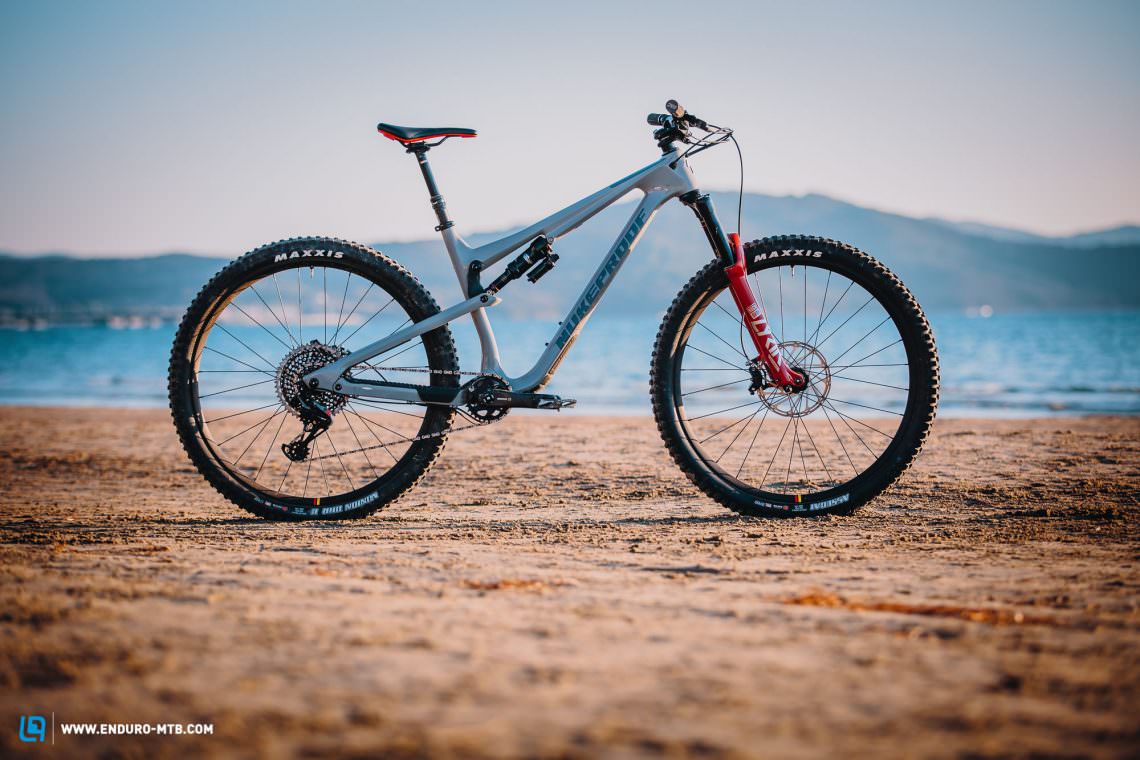
Nukeproof’s bikes have cut a very fine figure in all of our group tests and the brand new Reactor is no different. In contrast to their enduro bike, the Mega, there is space for a water bottle in the front triangle of the new Reactor. The Nukeproof Reactor comes with either 27.5″ or 29″ wheels. For this test, we received the RS version with the larger wheels. This bike comes with an added 10 mm travel up front and particularly robust componentry, such as the Lyrik Ultimate fork – though unfortunately with an RCT3 damper instead of the RC2 version. Powerful SRAM CODE RSC brakes and a robust MAXXIS ASSEGAI/Minion DHR II tire combination underline the bike’s focus on downhill performance. We really liked the Reactor’s in-house Horizon cockpit, which convinced us both optically and with its dimensions. We weren’t quite as happy with the Mavic Deemax DH wheels. Although they’re robust and reliable, they make the bike feel less spritely while accelerating. Nukeproof have designed the rear end of the Reactor so that it responds as sensitively as possible while also offering as much support as possible, which has been tuned with a lowered anti-squat rate.
Nukeproof Reactor 290
€ 5,399
Specifications
Fork RockShox Lyrik Ultimate RCT3
Rear Shock RockShox Super Deluxe Ultimate RCT
Seatpost RockShox Reverb 175 mm
Brakes SRAM CODE RSC 200/180 mm
Drivetrain SRAM X01 Eagle 30/10-50
Stem Nukeproof Horizon 50
Handlebar Nukproof Horizon Carbon 800 mm
Wheelset Mavic Deemax DH
Tires MAXXIS Assegai/Minion DHR II EXO+ 2,5/2,4
Technical Data
Size M L XL
Weight 14,6 kg
Wheelsize 29"
Travel (f/r) 150/130 mm
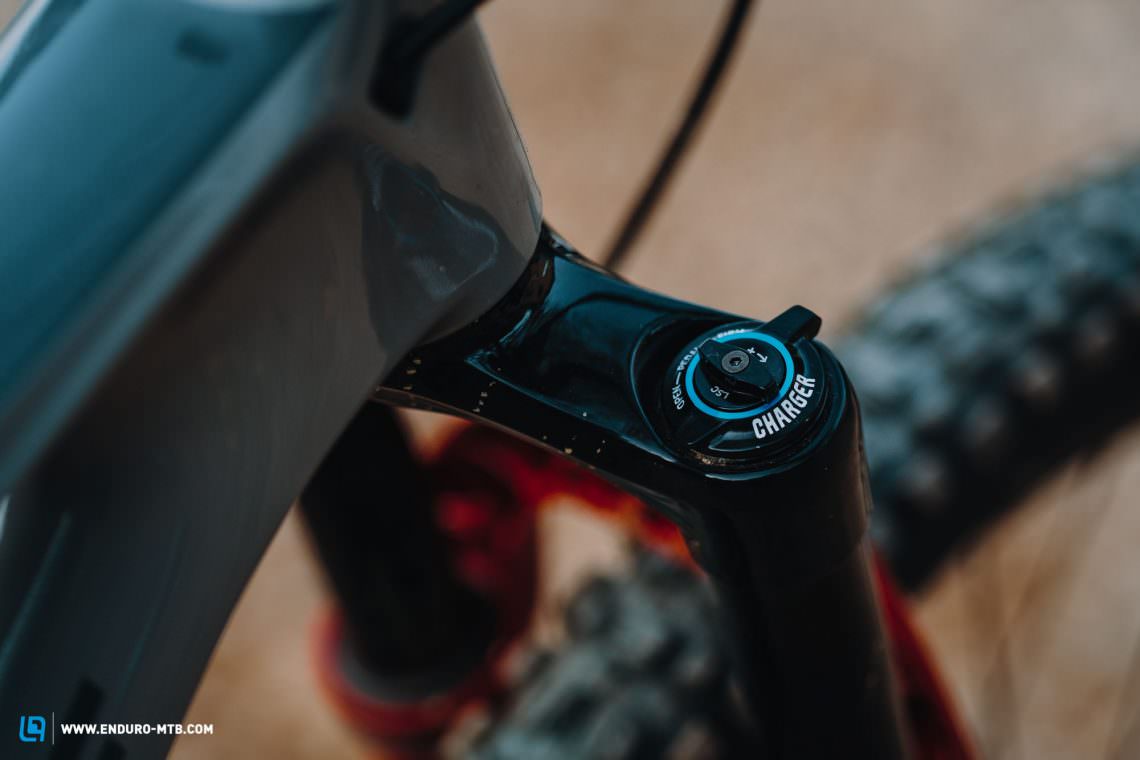
The robust componentry of the RS model of the Reactor is fully geared towards downhill fun. However, you have to ask why Nukeproof rely on the RCT3 model without high-speed compression damping instead of a Lyrik Ultimate RC2. Noone needs three trail modes!

Nukeproof spec the size L Reactor with a 170 mm dropper post. This gives you a lot of freedom of movement, instilling you with confidence and allowing you to have more fun.
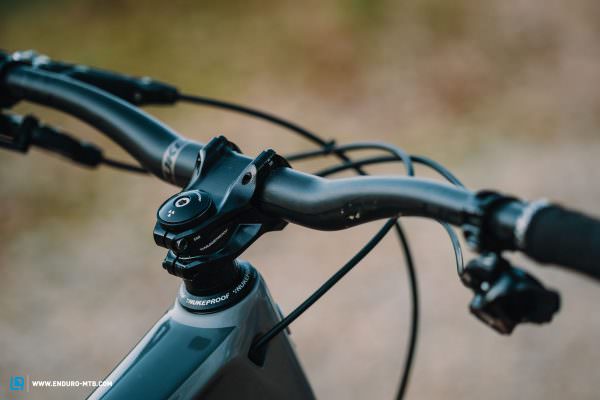
In-house components often look cheap, with little attention to detail. Not so with the Horizon cockpit on the Reactor – we’d have no qualms mounting this stem and handlebar on our personal bikes.

Nukeproof fans have been waiting for this for a long time – bottle cage mounts in the front triangle!

We chose the Rail setting for the flip chip. Even so, the Reactor climbs comfortably while offering even more reserves on the descents. Top: the flip chip is easy to adjust. Flop: the chipped paint.
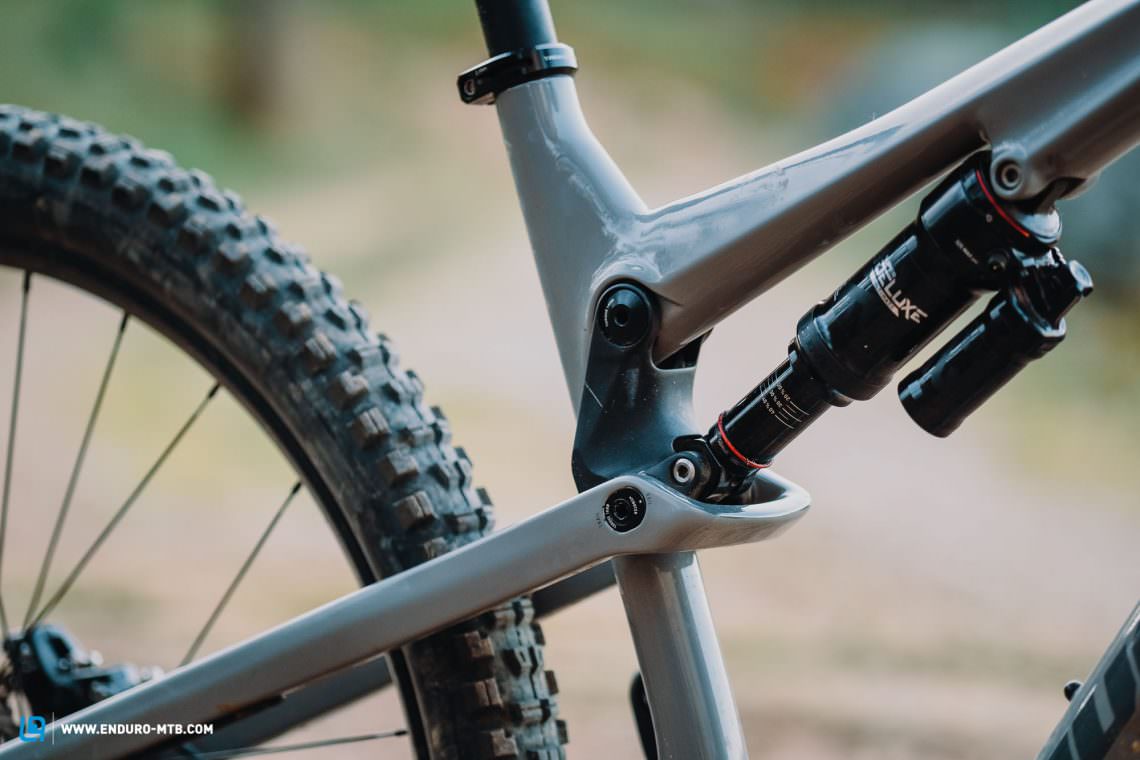
Despite having only 130 mm travel, the rear suspension of the Reactor has plenty of reserves.
Geometry of the Nukeproof Reactor 290C RS
The geometry of the Nukeproof Reactor can be adjusted with a flip chip from “Trail” to “Rail”. This drops the bottom bracket by a further 6 mm, bringing the overall drop to 36 mm. The head and seat tube angles slacken by 0.5° to 65° and 74.6° respectively. Typical for Nukeproof, the 440 mm chainstays are on the longer side of the spectrum, but this is one of the bike’s positive traits!
The Nukeproof Reactor is a mini enduro bike that can take on the roughest trails despite its short travel!
| Size | Medium | Large | Extra Large |
|---|---|---|---|
| Seat tube | 420 mm | 460 mm | 510 mm |
| Top tube | 611 mm | 641 mm | 676 mm |
| Head tube | 105 mm | 110 mm | 115 mm |
| Head angle | 65° | 65° | 65° |
| Seat angle | 74.6° | 74.6° | 74.6° |
| Chainstays | 440 mm | 440 mm | 440 mm |
| BB Drop | -36 mm | -36 mm | -36 mm |
| Wheelbase | 1,209 mm | 1,239 mm | 1,275 mm |
| Reach | 446 mm | 475 mm | 509 mm |
| Stack | 618 mm | 623 mm | 629 mm |
The Reactor 290C on test
During our test, we kept the Reactor’s flip-chip in the slack Rail position almost the whole time. The riding position on the bike remains balanced despite the slack seat tube angle. Taller riders will be pleased that the seat tube is relatively straight, which means that the angle doesn’t slacken further as you extend the dropper post. This positions you perfectly for long rides or steep climbs. No matter how hard you pedal, the rear suspension hardly bobs despite its low anti-squat value but the Reactor isn’t quite as spritely as the best bikes on test. This is probably down to the heavy wheels and the bike’s 14.6 kg weight. On technical climbs, the bike offers a lot of traction and easy handling.
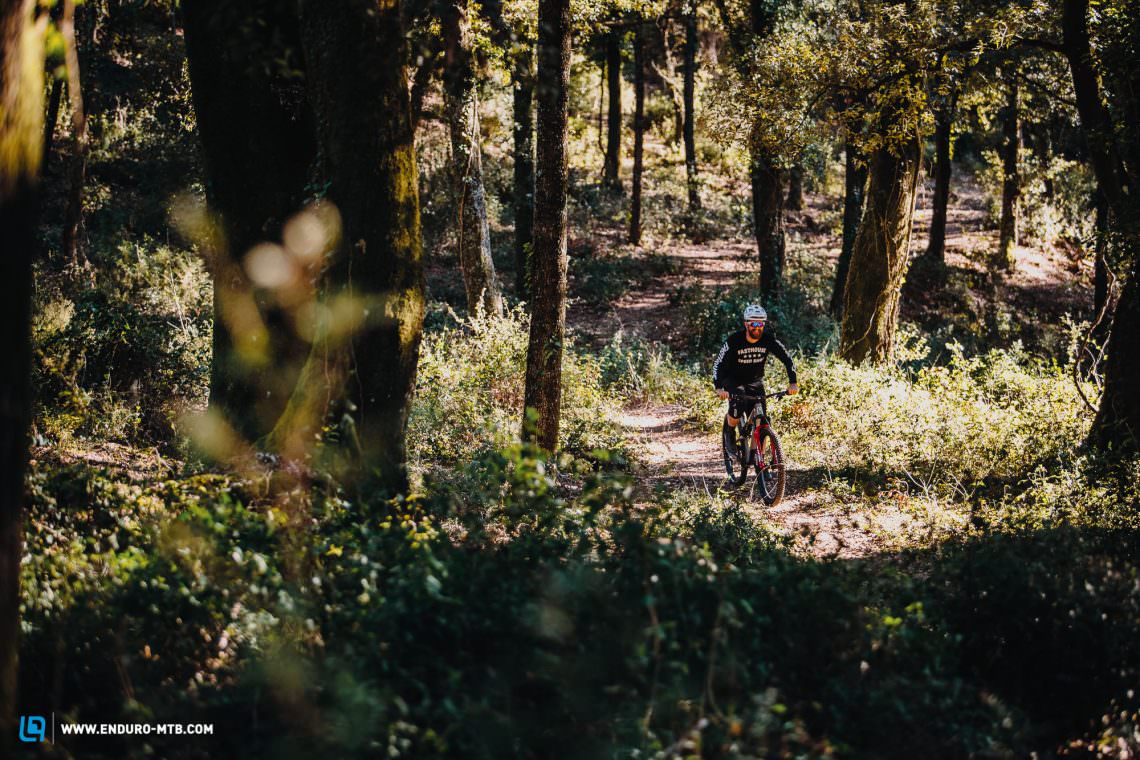


Balance is king! Thanks to its balanced handling, you’re always in control on the Nukeproof Reactor, making it damn fast downhill!
The Nukeproof Reactor 290C RS comes into its own as soon as you lower the 170 mm RockShox Reverb dropper post! You’ll feel confident and perfectly integrated between the big wheels the moment you point the bike downhill. Despite providing only 130 mm travel, the rear end generates enormous amounts of traction and the bike literally glides over the meanest rock gardens and roots. Cornering, the Reactor’s handling is well-balanced, precise and good-natured. Spot your line, aim for it and follow through – it’s that easy! Thanks to the balanced geometry and supportive suspension, you’re always placed centrally on the bike with your weight evenly distributed between the wheels. As you hit lips or rollers, the bike responds to your input directly and precisely without sagging into its travel, making for poppy and fun handling.
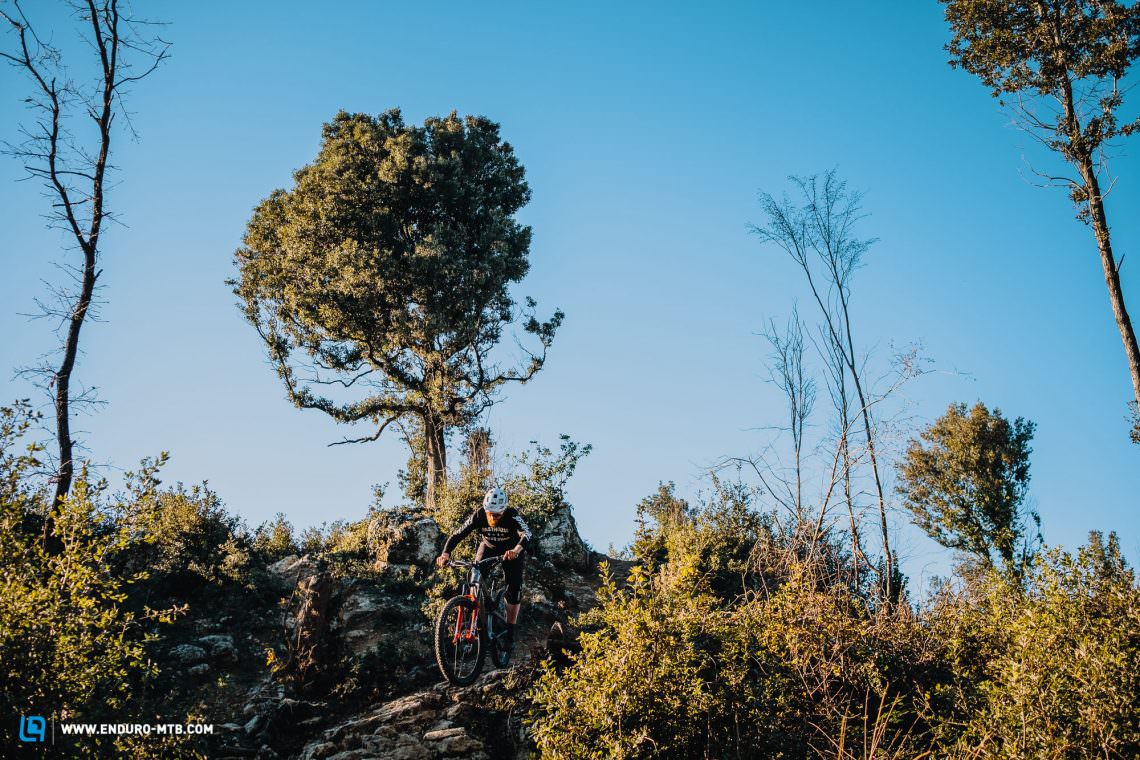
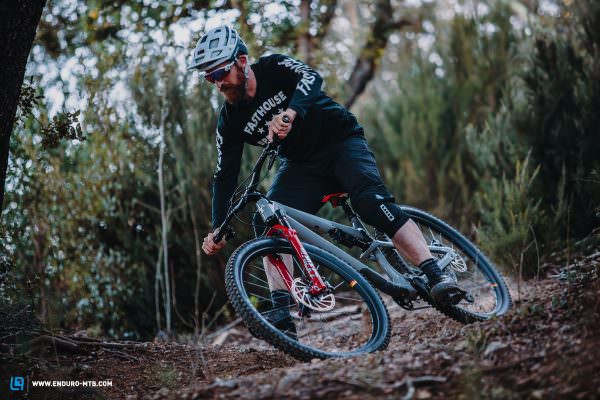

Tuning tip: lighter wheels
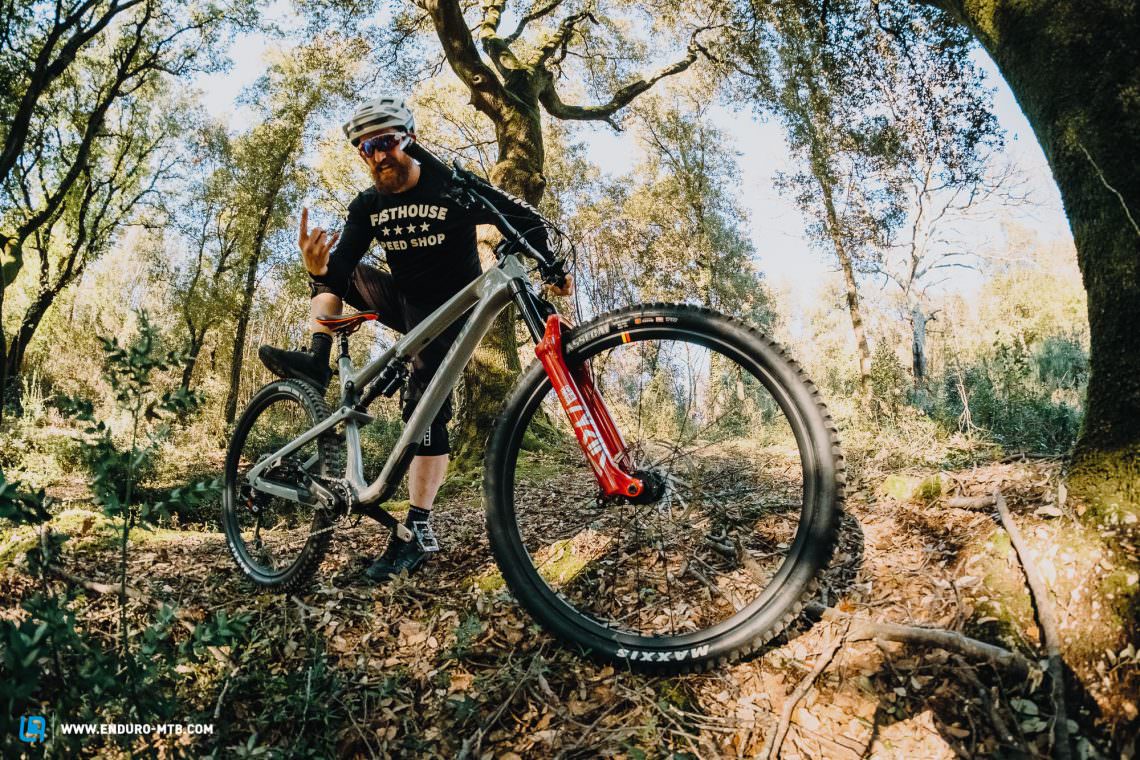
How does the Nukeproof Reactor compare to the competition?
The Nukeproof is among the best of this group test. It is more supportive than the YT JEFFSY on the descents and is a bit more balanced overall. The rider’s position is more balanced on the Nukeproof whereas your ride the JEFFSY more from the back making you more likely to drift in corners that you can grip through on the Reactor as if you’re on rails. Unfortunately, the Reactor’s weight holds it back on the climbs, putting it in the middle of the test field. However, the pedalling position is great and much more comfortable than that of the Radon or Cannondale. Overall, it can’t keep up with the versatility of the Ibis, Santa Cruz or Trek.
Conclusion of the Nukeproof Reactor 290C RS
The Nukeproof Reactor 290C RS is a terrific do-it-all bike. It’s a lot of fun on simple trails and doesn’t have to shy away from enduro races either. The bike’s highlights are its excellent rear suspension and balanced handling which make it easy to master even the most demanding trails, despite having only 130 mm travel. However, the weight of the RS version comes at the cost of sprightliness. If you want something lighter, we recommend the factory version.
Tops
- corners like it’s on rails
- excellent rear suspension
- well-rounded package
Flops
- not the most spritely
- RockShox Charger RCT3 rather than the RC2 damper
For more information head to nukeproof.com
The test field
Click here for an overview of the best trail bike in test.
All bikes in review: Cannondale Habit Carbon 1 (Click for review) | Canyon Spectral CFR 9.0 SL (Click for review) | Giant Trance Advanced Pro 29 (Click for review) | Ibis Ripmo AXS (Click for review) | Norco Optic C1 (Click for review) | Orbea Occam M-LTD (Click for review) | Radon Slide Trail 10 (Click for review) | Santa Cruz Hightower CC X01 Reserve (Click for review) | Scott Genius 900 Tuned AXS (Click for review) | Specialized Levo SL Expert Carbon (Click for review) | Specialized S-Works Stumpjumper SRAM AXS 29 (Click for review) | Trek Fuel EX 9.9 X01 AXS Project ONE (Click for review) | Yeti SB130 TLR (Click for review) | YT JEFFSY CF PRO (Click for review)
Did you enjoy this article? If so, we would be stoked if you decide to support us with a monthly contribution. By becoming a supporter of ENDURO, you will help secure a sustainable future for high-quality mountain bike journalism. Click here to learn more.
Words: Photos: Christoph Bayer, Finlay Anderson, Markus Frühmann, Jonas Müssig









